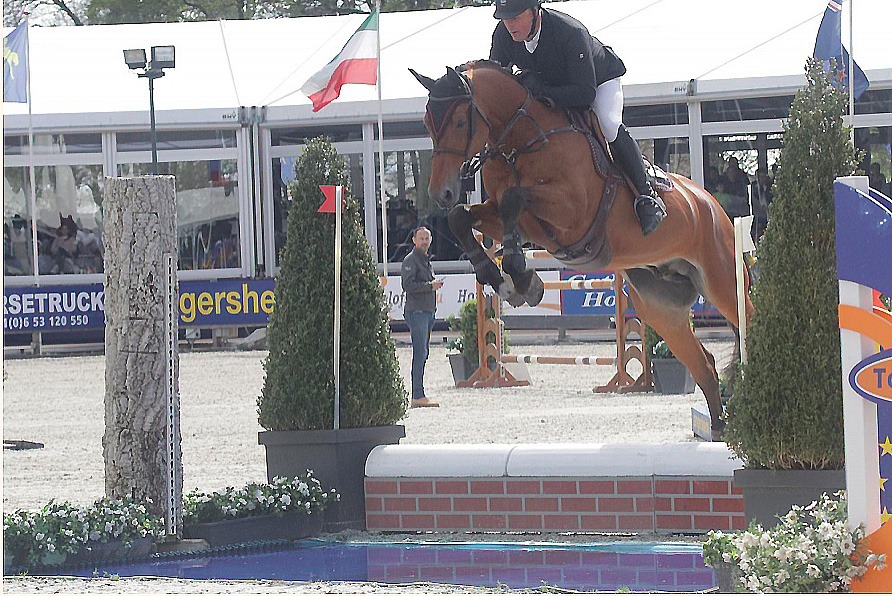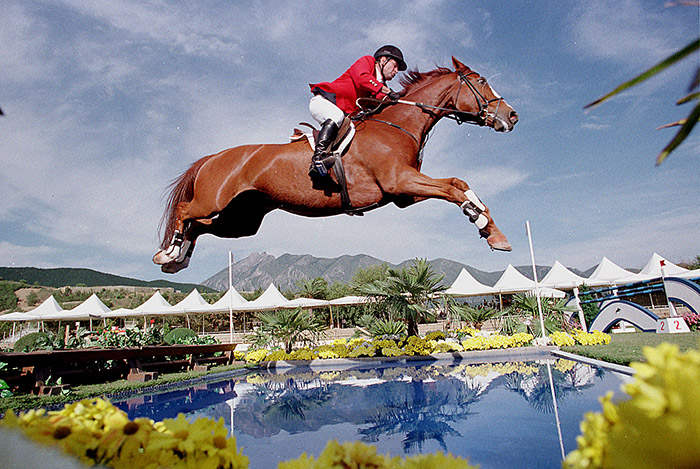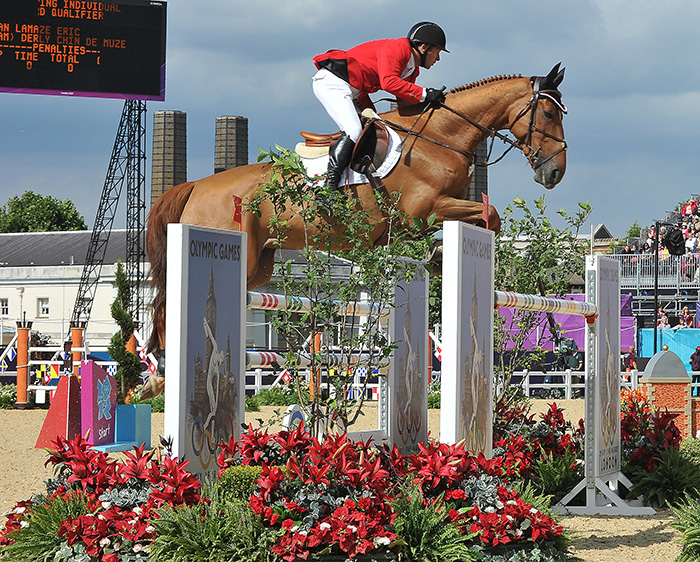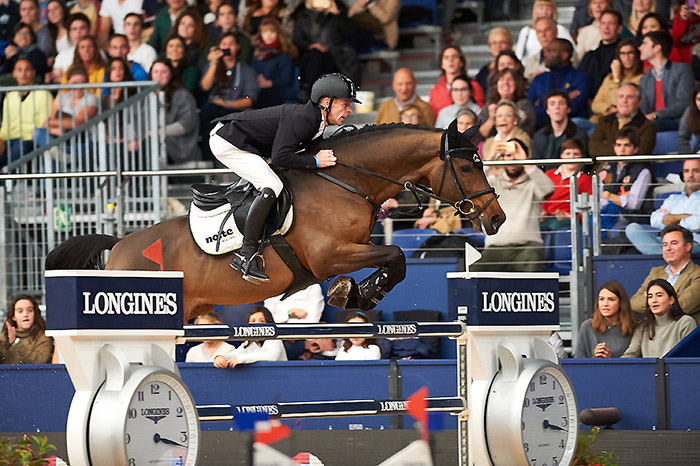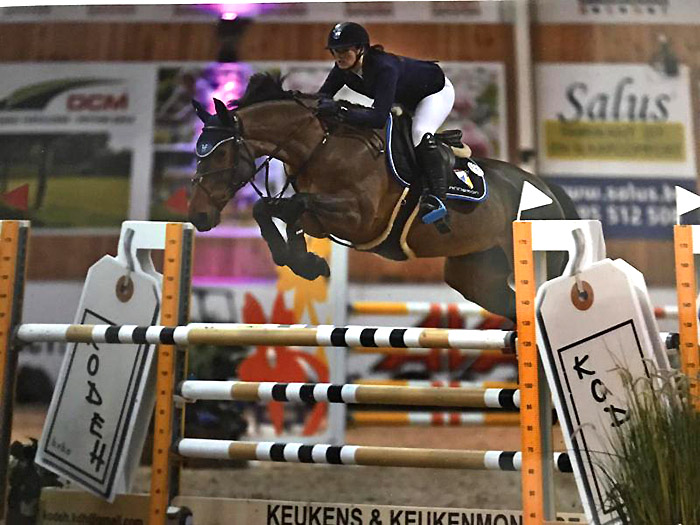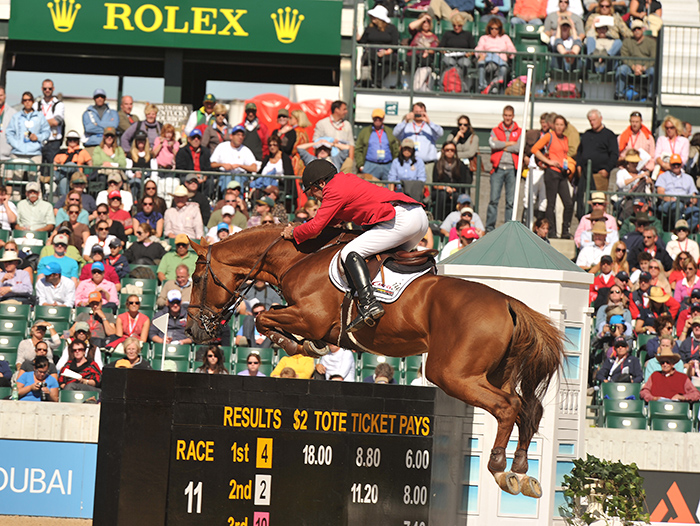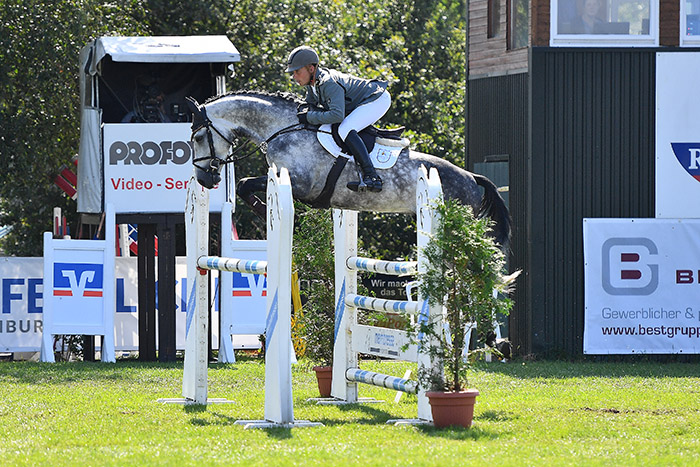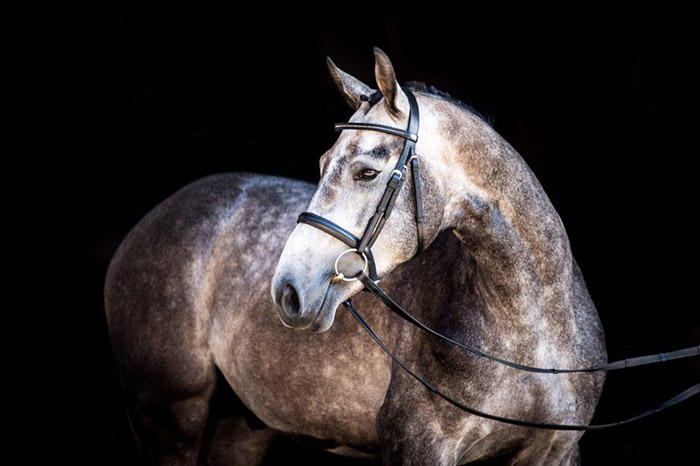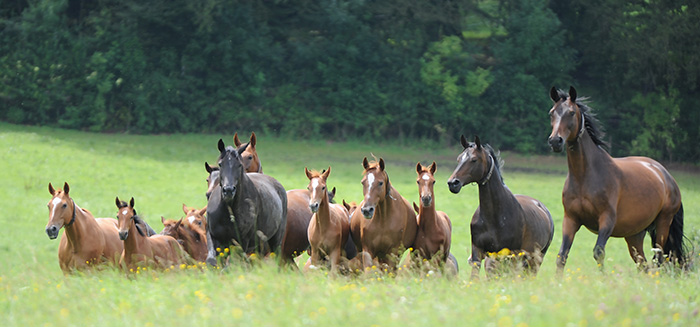
Mares – which are the great ones?
by Christopher Hector
Recently Hippomundo set out to find the world’s greatest mares, looking at all international competitors thus far in 2021, but all this really did was highlight just how dodgy any stats from the Covid period are going to be.
Their number one mare was Urquelle Deux vh Polderhof by Tenor Manciais (dam sire of Kashmir van’t Schuttershof) out of a mare by the Trakehner, Schönberg.
Freddy Demuynck and Amageddon vh Leeuwerikenhof
Photo credit https://www.horseman.org/nl-BE
But it would seem that Urquelle’s success is largely due to the efforts of Freddy Demuynck and his family. Mr Demuynck not only bred Urquelle’s most successful competitor, Amageddon vh Leeuwerikenhof (by Amour He van’t Leeuwerikenhof), but Freddy and his daughter, Joy, also competed the gelding up to 1.45 level. Indeed all seven offspring have been competed by members of the Demuynck family.
No doubt Amageddon is a pleasant chap, and since he is by the home bred son of VDL Silverstone, Amour He van ‘t Leeuwenrikenhof out of a mare by the Ahorn Z son, Dreamstreet, has probably more than paid the way with his earnings on €4,683 – but…
The 1.35 competitor, Joy’s Dreamgirl, Urquelle’s daughter by Kashmir van Schuttershof, has won slightly more, €5,979 but the rest of Urquelle’s brood would be struggling to pay their feed costs: Hanne, another by Kashmir, has won €2,661; Merryweather, by Emerald, has earned €1,312 while Nashville (Nabab de Rêve) has won €260, Nougat, another Nabab, has won €240 and Kaffeeaulait (Kashmir) brought home €170, so far.
Story continues below the advertisement
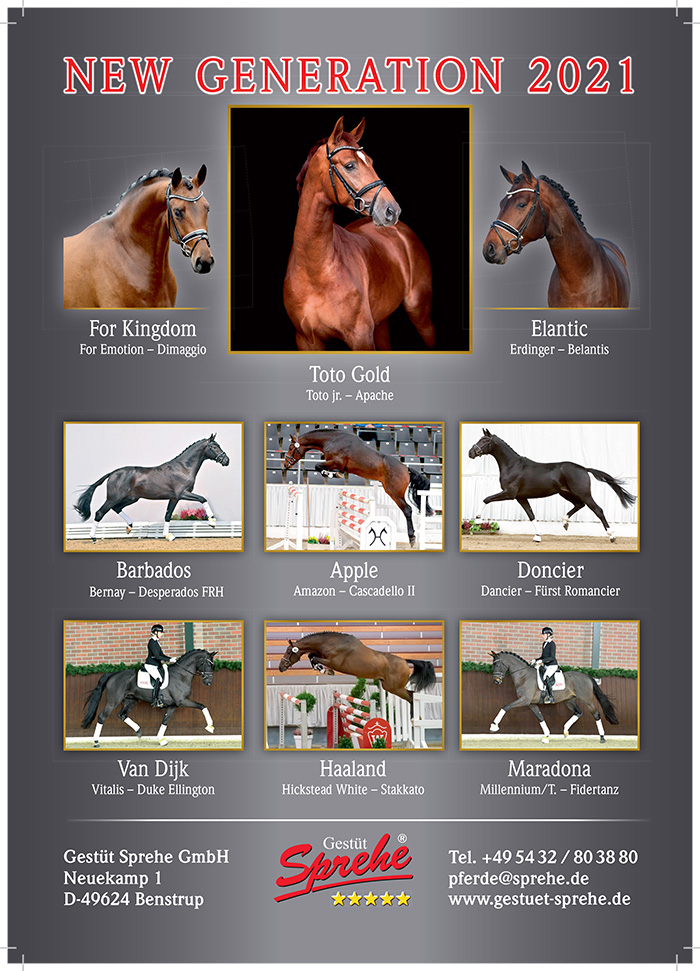
The other ‘great’ mare on the Hippomundo list, also with seven international competitors, is Cafe Creme, by a somewhat obscure son of Carthago, Creve Coeur (out of a Calypso II mare), but she is well bred on the dam line, Athlet Z over Lord. Cafe Creme appears to have a greater claim on our attention… but ‘great’?
Cafe Creme, herself, competed up to 1.45 with Phillip Lejeune. Her most successful offspring so far this year, is Blueberry de Hus by HH Conrad (Con Air / Locato), competing 1.60 in the USA with Nicholas Dello Joio, and with winnings of €25,944.
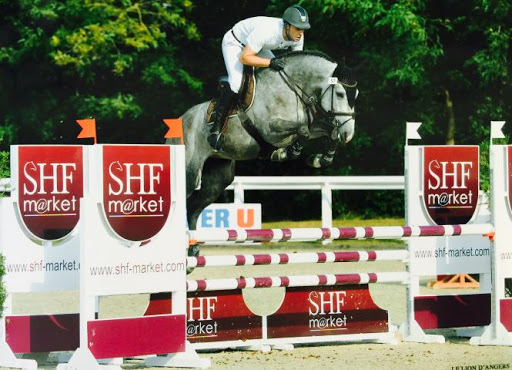
Blueberry de Hus (photo credit – Haras de Hus)
Another product of Haras de Hus, Copacabana de Hus by Cosinhus (Cornet Obolensky / Gamblers Cup xx) competes at 1.50 level in Mexico with Arturo Parada Vallejo, winnings, €5850.
The five others are Classical de Kreisker (by the Diamant de Sémilly son Ugobak des Baleines, out of a Heartbreaker mare) who has won €1,244; Excaliber de Hus (by Eldorado de Hus, by Diarado out of a Balou de Rouet mare), €226; Dubai de Hus (by the l’Arc de Triomphe son, Tsunami de Hus, dam by Argentinus) who has won €1,010 at 1.40 level; Constantin de Hus (Ugobak) €478 and Broadway de Hus by the Quidam de Revel son, Seigneur du Grand Pre, jumping 1.35 but no winnings recorded.

Eliot Brimbelles Z and Titouan Schumache
Probably the most interesting thing in this list of ‘great’ mares is that it records a product of a clone – a clone that has actually sired something!
The great ET and Hugo Simon…
In this case the clone of the great ET (Espri / Garbaldi II) The mare, Karolympe Plardiere (Diamant de Sémilly / Glamorgan) is the dam of six international competitors, including Eliot Brimbelles Z who Titouan Schumacher has taken to 1.60 level, earning €25,881 along the way. Eliot Brimbelles Z is by ET Cryozootech Z (Espri / Garibaldi II).
ET Cryozootech Z has recently returned to his stable at the European Horse Center in Mont-le-Soie, but even the press release could only add these moderate performers to the clone’s successful progeny: Ethanol Vert Z (Calvaro / Jalisco) 1.45 and €5,234 and Ethic Z (Clown du Chesnay / Almé) 1.35 and €5,456; Etourdi Z (Diamant de Sémilly) €1,073 and Etcetera Z (Jabad) €775. It would seem that the 15-year-old ET Cryozootech Z like the others fashioned in the first frenzy of cloning, has not been a star in the breeding barn let alone the competition arena.
story continues below the advertisement

So let’s not look at the current very weird season, but at winnings-overall-to-date, and then we find a really great mare heading the list, Whoopie C (Mr Blue / Feinschnitt I van de Richter). Whoopie was moderately successful at 1.60 level, her best international result a 4th at Duisberg, CSN.
She comes from one of the most successful mare lines in the world. Her dam, Rapsodie C is by Feinschnitt I van de Richter, who jumped 1.60 and is classic old Hanoverian, by the Ferdinand son Wendekreis out of a Walfried / Duellant mare, out of a mare by Furioso Z a son of Furioso II.
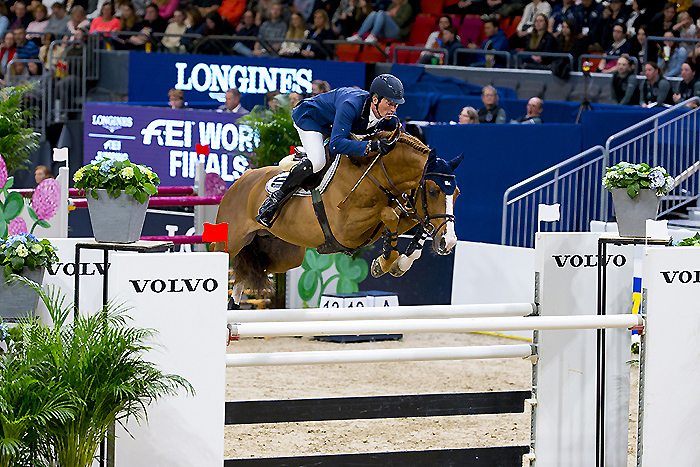
Tobago Z and Daniel Duesser
Whoopie C is the dam of a string of GP stars: HH Donatella (Toulon), Tobago Z (Tangelo vd Zuuthoeve); Beijing Z (Bamako de Muze) and Aga-Khan-C (Kannan).
Right now Whoopie C is represented by three international competitors who between them have won €237,057.
Derly Chin de Muze and Eric Lamaze at the London Games
The other mare with current progeny earnings of more that 200k is Derly Chin de Muze (For Pleasure / Nabab de Rêve) very much the product of master breeder, Joris de Brabander. She was herself a star competitor, with earnings of €84,295, placing second at Calgary with Eric Lamaze, and fifth in the London Games. She too comes from a megastar family. Her dam is Werly Chin de Muze by Nabab, out of the famous Qerly Chin by Chin Chin. As with Whoopie C, every generation on her pedigree is studded with jumping stars.
Thanks to Joris’ skill as a vet, Derly had every opportunity to star as a brood mare, producing 30 foals between 2003 and 2017 – the most famous of which is another of Daniel Deusser’s frontliners, Killer Queen VDM (Eldorado van Zeshoek) who has won €750,745 thus far.
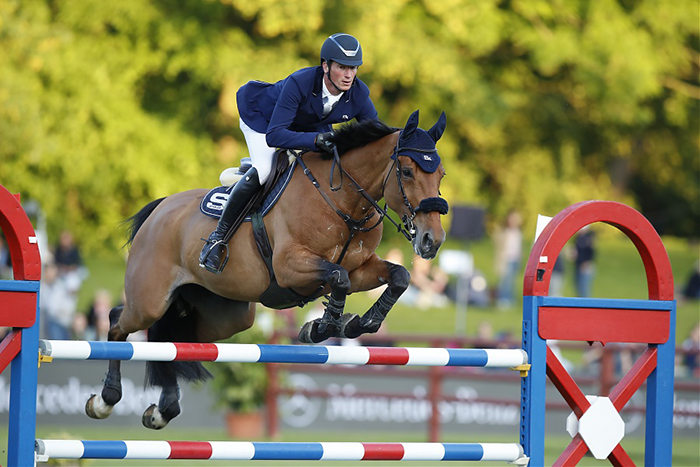
Daniel Deusser and, Killer Queen VDM
It is an ongoing debate in the world of jumping breeding, do the great competitors come from mares who themselves were competitors – or as the highly successful Dutch breeder (and vet) Jan Greve believes: “I’m not sure why this happens but it seems to me that you cannot use the animal’s body twice – to have it a showjumper until it is 14/15 years old, and then into the breeding, it hardly ever works. Ratina didn’t work. It might just be that it is too much to expect from the body. It’s funny but everybody has a certain age when you produce the best, with a milking cow, it is the third to the fifth calf that gives more milk. I cannot explain why it happens with horses, but it does seem that you can’t use the body double, to be a good sporthorse and then to be a good mother.”
Comme Il Faut and Marcus Erning
I would think that Comme il Faut (by Cornet Obolensky) shows that Ratina can produce a really first class jumper, but deary me, she, and her clones, had so many opportunities with so many stallions that the result is still disappointing.
story continues below the advertisement
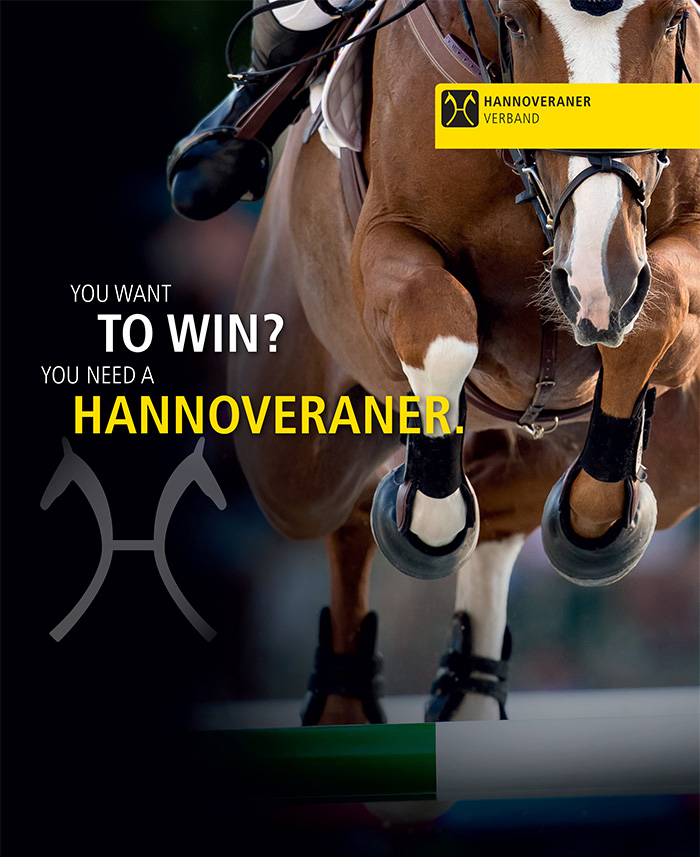
Another great breeder and vet – perhaps the most successful the world has seen – Joris Brabander, takes the opposite view:
“The better the mares are, the better they can jump, the better the foal. It is true that very good jumping horses normally don’t have good chances, they are too old to breed, or they are in the hands of rich people, or they are in countries where they don’t have a breeding culture, and very often when a guy has a very good competition mare, he uses his own stallion which is very often not good enough. If you breed to very very good mares, it is always better than breeding to the others.”

Butterfly Flip and Malin Baryard-Johnsson
Not surprisingly, Joris was delighted to add Butterfly Flip (Robin I Z / Moderene) to his mare band. In 2004, the mare was 13th on the WBFSH standings with Malin Baryard-Johnsson. They competed five times at World Cup finals, making the top ten three times. In 2003 they were third behind Marcus Ehning and Anka, and Rodgrigo Pessoa and Baloubet du Rouet.
Joris acquired Butterfly Flip in 2011 and she died in February 2021 – in that decade of breeding how successful has she been as a brood mare?
Elle Flip de Muze (photo credit – jorisbrabander.be)
Butterfly Flip produced five foals for Joris in 2012 – by Vigo, Nabab, Norton d’Eole and Elvis ter Putte. The most successful has been Elle Flip de Muze by Elvis ter Putte (Diamant de Sémilly / Darco) whose most recent placing was 15th in a 1.35 at Lier in September 2020. Of course her competition opportunities have been limited this year.
Joris’ stallion, Vigo d’Arsouilles at the WEG in 2010
Ninja Flip Z, by Nabab de Rêve, has jumped at 1.35, while Butterfly Flip has even produced an eventer, Vigo’s Flip de Muze Z (by Vigo d’Arsouilles) – though given her Thoroughbred heritage this should be no surprise. Ridden by Belgian Jarno Verwimp she placed 12th at Arville CCI***S in August 2020.
Still Butterfly Flip’s most successful foal has been Flip’s Little Sparrow (by Cardento), who competed up to 1.65 level with Stephanie Holman and Peder Fredricson. Flip’s Fairy Tale, by Click and Cash, competed up to 1.40 level, her last start in February 2017 for a 13th in a 1.30 class.
Was the great jumper a great broodmare? We’ll have to wait a little while, but the picture is not looking super bright. It is a debate that will continue, but I hope one thing we have learnt from this brief look at ‘great’ and great mares, is that any stats that emerge from 2020 and 2021 should be treated with extreme caution.

